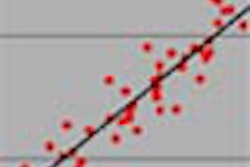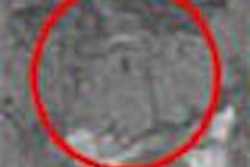The results of several large multicenter trials in virtual colonoscopy will have to be completed before the technique can be considered a true alternative to conventional colonoscopy. But a group of researchers from Harvard Medical School in Boston couldn't wait, so they analyzed the existing literature in an effort to produce the next best thing.
Until the multicenter trial results are available several years from now, "data from all published studies can be collectively analyzed with meta-analysis," said lead researcher Dr. Jacob Sosna at the 2002 RSNA meeting in Chicago. "Our purpose was to assess the reported accuracy of CT colonography compared to conventional colonoscopy for the detection of colorectal polyps."
The group performed a search to identify relevant English-language studies published since 1994. The articles were evaluated for design characteristics, then key data were extracted for input into a common form, Sosna said. The suitability of data-pooling across studies was assessed by means of an exact contingency table test. The Fisher exact test and the Cochran-Mantel-Haenszel test were used to pool data.
Sensitivity and specificity were determined using a 95% confidence interval, and trends were identified by means of the Kruskal-Wallis exact test, Sosna said.
"We made comparisons between CT colonography and conventional colonoscopy for polyps under 5 mm, 6-9 mm, 10 mm or greater, and the percentage of patients with the same size criteria of the polyps discovered," he said.
Sosna and colleagues found 146 published studies in their search, 14 of which fulfilled all of the inclusion criteria. Studies were excluded for several reasons, including retrospective design, significant use of intravenous contrast, or other reasons. But the 14 studies that fit the specifications included more than 1,300 patients with more than 1,400 polyps. Single-slice CT, multislice CT, and sometimes both were used, he said.
According to the results, the pooled per-patient sensitivity for polyps greater than or equal to 10 mm was 86% (95% CI of 0.81, 0.91). Sensitivity was 81% (95% CI of 0.81, 0.91) for polyps 6 to 9 mm in size. And sensitivity was 57% (95% CI of 0.49, 0.65) for polyps less than or equal to 5 mm.
"When we look at the per-polyp sensitivity it goes down to 81% for larger polyps, 62% for medium-size polyps, and quite poor sensitivity for smaller polyps, 43%," Sosna said. "And when you look at the progression in a linear trend ... the difference between the medium and large polyps is statistically significant."
On the positive side, virtual colonoscopy confirmed the absence of polyps larger than 10 mm in 732 of 768 patients, he said, and virtual colonoscopy's true specificity for polyps larger than 10 mm was 95%. The group did not calculate the true specificity for smaller polyps, because among the studies that reported them, specificity for smaller polyps was very low.
"What are the limitations of this study? Publication bias is the tendency to publish good results before less good results," he said. "(And) all of the patients, or most of them, were at high risk for polyps."
The collective experience shows that virtual colonoscopy is accurate, with excellent sensitivity and specificity (81%) for polyps larger than 10 mm, Sosna concluded.
By Eric BarnesAuntMinnie.com staff writer
March 19, 2003
Related Reading
Virtual colonoscopy beats FOBT, flexible sigmoidoscopy, February 21, 2003
Workflow issues key in virtual colonoscopy, January 15, 2003
Low-dose CT colonography accurately detects large colorectal neoplasms, July 30, 2002
Virtual colonoscopy falls short in multicenter trial, June 3, 2002
Copyright © 2003 AuntMinnie.com



















